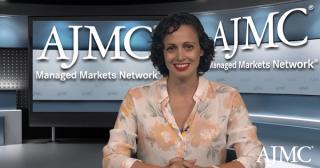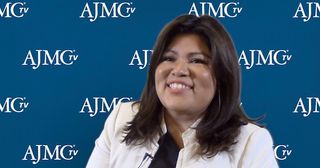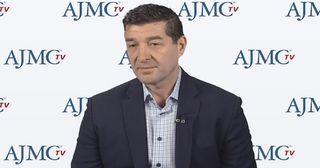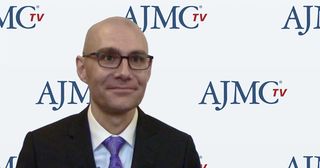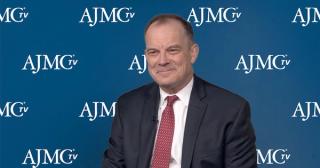
Employers
Latest News

Latest Videos

CME Content
More News

The fourth annual Numerof Survey Report outlined the evolution of population health management in the United States. The report found that while the population health management has been gaining momentum, initiatives toward adopting risk-based models have stalled.

The results come as US professional societies are updating primary prevention guidelines in cardiology.

At the Community Oncology Alliance's 2019 Community Oncology Conference in Orlando, Florida, a panel discussed strategies for practices to collaborate and survive the recent wave of consolidation. Targeting employers is one solution.

America’s Health Insurance Plans (AHIP) and 16 other organizations sent recommendations to Congress this week that they said will protect Americans from surprise medical bills.

Costs remain the top concern of healthcare purchasers of pharmacy benefits, but employers are also concerned with ensuring appropriate use of medication and adherence to medication, according to a new report from the Pharmacy Benefit Management Institute (PBMI).

The Greater Philadelphia Business Coalition on Health (GPBCH) seeks to increase the value of health benefit spending for its employer members by improving workforce and community health, increasing healthcare quality and safety, and reducing health care costs. Here is a summary of GPBCH's activities in 2018.

Employers are placing an increased focus on healthcare benefits and integrating or expanding healthcare offerings. With healthcare costs rising, employers are focusing not only on health plans but also on ways to improve employee experience with healthcare.

Nonsteroidal anti-inflammatories (NSAIDs) have passed opioids as the most common drug group prescribed to injured workers in California, while payment data show that both dermatological medications and anticonvulsants now rank ahead of opioids in terms of total reimbursements, according to a report examining trends between 2009 and 2018.

This Trends From the Field article about awareness and adoption of reference-based pricing in The American Journal of Managed Care® comes as the price of medical services is increasingly seen as a driver of the cost of healthcare, even as overall trends level off or stabilize.

This qualitative study finds low employer adoption of reference-based pricing (RBP) benefit design and that redesign of RBP may be necessary to overcome barriers to adoption.

This week, companies are showcasing digital health at conferences in Las Vegas and San Francisco, but when it comes to alleviating disease burden or the cost of care for vulnerable populations, the promise of digital health is not yet fulfilled, according to a study published in Health Affairs.

After growing modestly between 2011 and 2016, the average premium for employer health plans rose sharply in 2017, growing 5.5% from 2016 to 2017 for family plans and 4.4% for single-person plans.

Nine organizations representing health insurance companies, consumers, and businesses announced Monday that they support the concept of federal legislation to protect patients from receiving surprise medical bills.

During a case study, employees were more willing to have less robust coverage in areas like dental, vision, and diagnostic benefits so that the group could have access to more comprehensive mental health and maternity services.

An event hosted by the American Enterprise Institute highlighted companies in the private sector that are working on novel ways to transform healthcare and bring better value to patients.

According to the 2018 benchmark Kaiser Family Foundation Employer Health Benefits Survey, annual premiums for family and single coverage have increased in 2018 and the burden of deductibles continues to grow on employees. However, as premiums rise, so does employer investment in health and wellness programs for their employees.
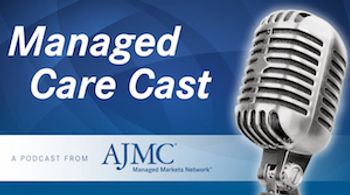
Employers may not look forward to purchasing healthcare, but they are in the position to transform the market. More employers are getting more involved in healthcare by championing alternative payment models and other services to their employees.

Employers who have been disappointed in the past with wellness programs want to see evidence of patient engagement and how this translates into savings.

The survey of more than 340 women revealed an overwhelming belief that people with migraine are dismissed as exaggerating their symptoms and that employers don't understand the burden of migraine on their employees.

New research from the Employee Benefit Research Institute has found that although there was some erosion in health insurance offered by employers after the implementation of the Affordable Care Act, the percentage of private-sector employers offering health benefits increased in 2017 for the first time since 2008.

In a survey of 170 employers, employers indicated that they are taking a more activist role in delivering healthcare to their employees, expressed frustration with the pharmaceutical supply chain, and said they expect to see a large uptake of virtual healthcare in the coming years.

A new study from the Healthcare Financial Management Association, Leavitt Partners, and McManis Consulting found that the penetration of value-based payment (VBP) models is not yet enough to generate cost savings and is also not affecting clinical quality outcomes at the market level.
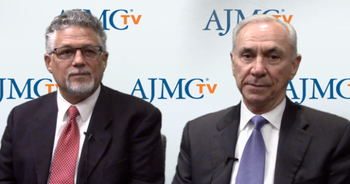
The ability to have a plan that’s going to work and be large enough that it makes sense for those involved is a barrier for employers who want to pursue alternative payment models, said David Merrill, HR benefits manager, Volusia County, Florida, and John Robinson, CEBS, REBC, RHU, president and CEO, RobinsonBush.

Scaling back the Comprehensive Care for Joint Replacement model and canceling an expansion proposed under the Obama administration represents a shift in philosophy from mandatory to voluntary bundled payment models. But some say that commercial payers and employers will demand change no matter what CMS does.

The Gallup-Sharecare Wellbeing Index released its estimate of the cost of diabetes for employers on World Diabetes Day.


